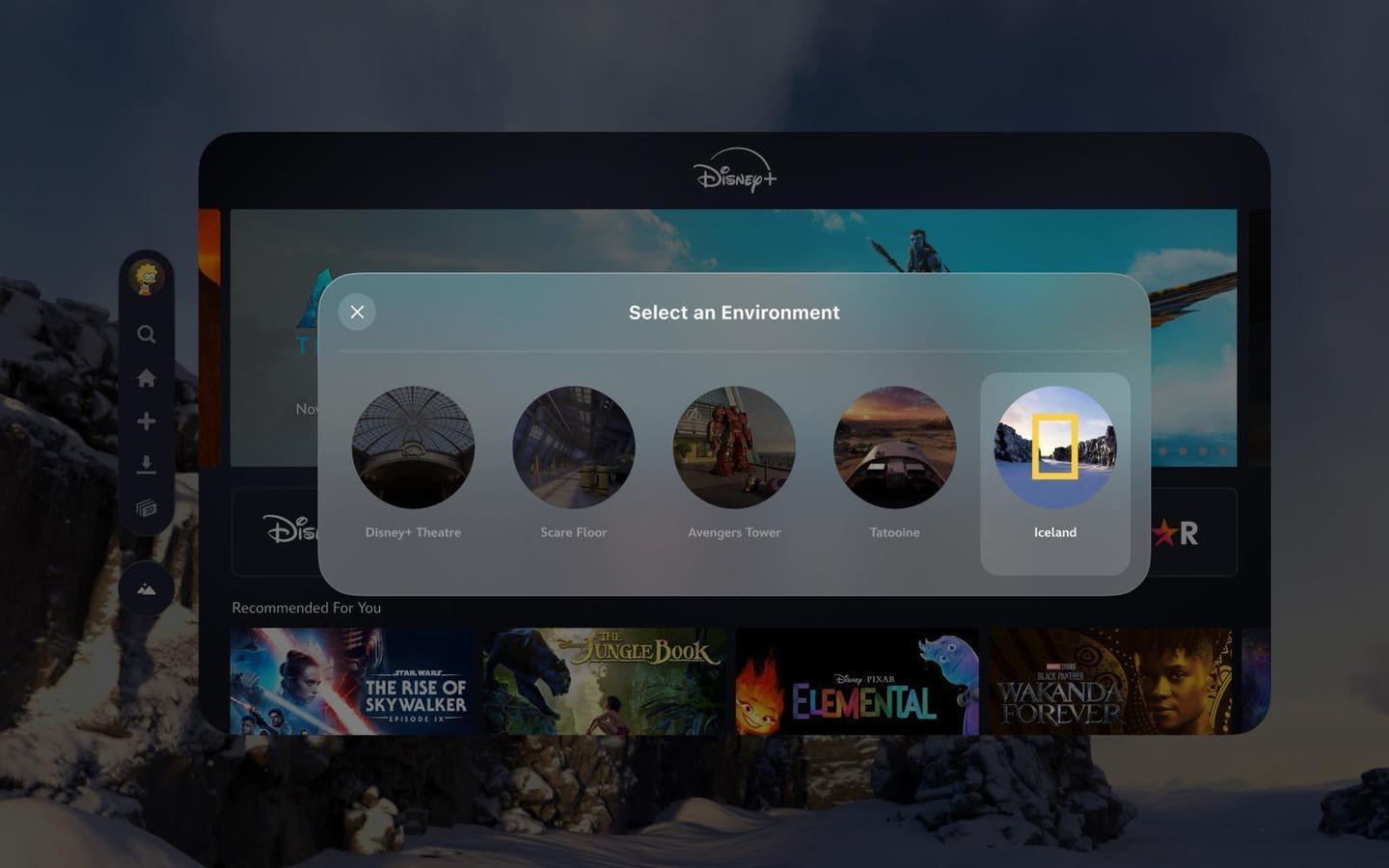Disney modestly expanded its already significant presence on the Apple Vision Pro, announcing a wintry exclusive immersive background environment from National Geographic for the pricey spatial-computing headset, and four more big Marvel movies in 3D.
The four films added to the studio’s Disney+ streaming service on the AVP are The Avengers (2012), Avengers: Age of Ultron (2015), Ant-Man (2015), and Ant-Man and the Wasp (2018).
The two Avengers movies racked up more than $2.9 billion in global theatrical grosses, making them among the most successful film releases of all time. The Ant-Man projects weren’t quite as boffo at the box office, but still jointly accounted for nearly $1 billion in global grosses.
The Apple Vision Pro debuted in February with a number of Apple-supplied background environments taken from highly realistic real-world natural settings, including a lakeside-view of Mt. Hood in Oregon and a high-desert scene in Joshua Tree National Monument.
The environments change over the course of the day and night, and also include gentle background sounds such as rain drops and wind. Turning the AVP’s crown mechanism allows the environment to opaquely block out external surroundings or make the virtual environment increasingly transparent so a user can see what’s happening around them.
The new environment from National Geographic features a snowy immersive scene from Iceland’s Thingvellir National Park, a UNESCO world heritage site, and is exclusively available to Disney+ subscribers. It is NatGeo’s first AVP project, captured by the organization’s photographers using high-resolution 3D models captured on-site using photogrammetry and gigapixel panoramas. It features a night-time aurora borealis.
“Creating this immersive environment was a natural next step for us to take to build on that legacy and to continue enabling audiences to experience the beauty of our natural world and see places they may never go to otherwise,” said National Geographic EVP David Miller in a release.
Apple debuted its immersive headset with about 150 3-D films as part of the subscription Disney+ app among other offerings. Apple even used a scene from James Cameron’s Avatar: The Way of Water as part of its 30-minute headset demonstrations in its United States stores. The company recently said it would begin selling the headset in nine other countries before the end of the year.
More recently, Disney+ added an AVP-friendly episode of its Marvel What If.. animated series, called What If…An Immersive Story.
External estimates of AVP sales have been modest, less than 500,000 units. Apple has not released any sales figures. The apparent slow start is perhaps unsurprising given the AVP’s starting price of $3,499. It has been criticized for the price, which is roughly 10 times that of far less capable but market-leading Quest headsets from Meta.
But the AVP also provides remarkable high-end video, audio, telepresence and other immersive technologies unmatched by anything else in the commercial market. It also integrates into the vast Apple hardware and software ecosystem, already running thousands of apps from other Apple platforms.
Tech consultant and essayist Matthew Ball recently likened the AVP, and the many years Apple spent developing it, to what Tesla went through to launch its electric vehicles, beginning with a model that cost more than $100,000 while it worked out production processes, charging networks and the rest, on the way to building a $35,000 electric vehicle.
“So part of this is not just about building the developer ecosystem, understanding what consumers want, and playing around with price points and feature and weight and form and fit and things like eyesight, but it is actually building up the infrastructure to be able to get the cost down,” Ball said.
Read the full article here





